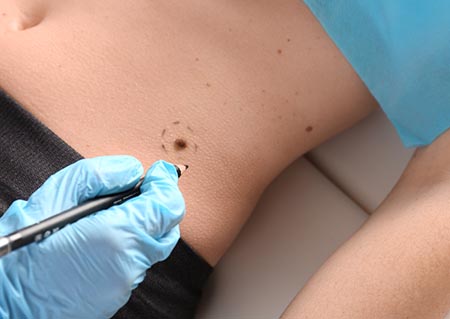What to Know Before Having Mohs Surgery
When someone is diagnosed with skin cancer, treatment decisions often come quickly, and so do worries about cost. Mohs surgery is a very precise and successful method to remove certain skin cancers. But it can differ from what most patients expect, particularly regarding billing and insurance coverage. In Montana, where advanced dermatologic care may require travel, understanding both the medical and financial sides is important for informed decisions.
Why This Technique Is So Widely Recommended
Mohs surgery is not just another skin cancer removal. It involves removing cancerous tissue in very thin layers and examining each layer under a microscope during the procedure. This ensures all cancer is removed while preserving healthy tissue.
- Layer-by-layer removal ensures no guesswork about complete cancer removal.
- Often results in higher cure rates than standard excisions, especially for complex or recurrent cases.
- Recommended for cancers on the face, scalp, ears, lips, hands, and other areas where appearance and function are critical.
The Billing Often Reflects the Complexity
Mohs surgery combines both removal and immediate pathology analysis, which is reflected in the billing. Unlike standard excision, Mohs physicians perform both the surgical and pathological roles.
- Insurance codes account for the number of tissue layers (“stages”) removed.
- Wound repair—stitches, flaps, or grafts—is billed separately based on complexity.
- Multiple line items may appear on the bill for what felt like a single operation.
Insurance Usually Covers It—With Caveats
Mohs is generally considered medically necessary and covered by Medicare and private insurance. However, patients may still have deductibles, copays, or coinsurance, especially for more complex repairs.
- Insurance companies may require prior authorization or documentation from the dermatologist explaining the need for Mohs.
- Insurance verification is often done in advance to clarify coverage and out-of-pocket responsibility.
- Estimates can vary depending on the number of stages and the type of wound closure.
Why the Costs Can Vary Patient to Patient
Even two patients treated on the same day for the same type of skin cancer can receive very different bills due to procedural details.
- One patient may need a single-stage removal with simple closure; another may require multiple stages and a skin graft.
- Additional tissue analysis or surgery at an ambulatory surgery center can add charges.
- Billing reflects the complexity and precision of care delivered, not arbitrary fees.
Why It’s Worth Talking With the Billing Team First
The best time to discuss costs is before surgery. Most offices can provide a reasonable estimate of what insurance will cover and what the patient may owe out-of-pocket.
- Uncovered amounts, including deductibles or copays, are typically the patient’s responsibility.
- Payment is usually due at the time of service unless prior arrangements are made.
- Experienced practices can help make care both high-quality and financially manageable.
The Long-Term View: Why Mohs Pays Off
Mohs surgery may be more involved than other treatments, clinically and financially, but it offers unmatched peace of mind. It removes cancer effectively while minimizing disruption to surrounding skin, often reducing the need for further procedures.
Understanding both the surgical process and billing helps patients make informed choices for their health and quality of life.
To speak with a member of our team or schedule a consultation, call (406) 702-1323.



